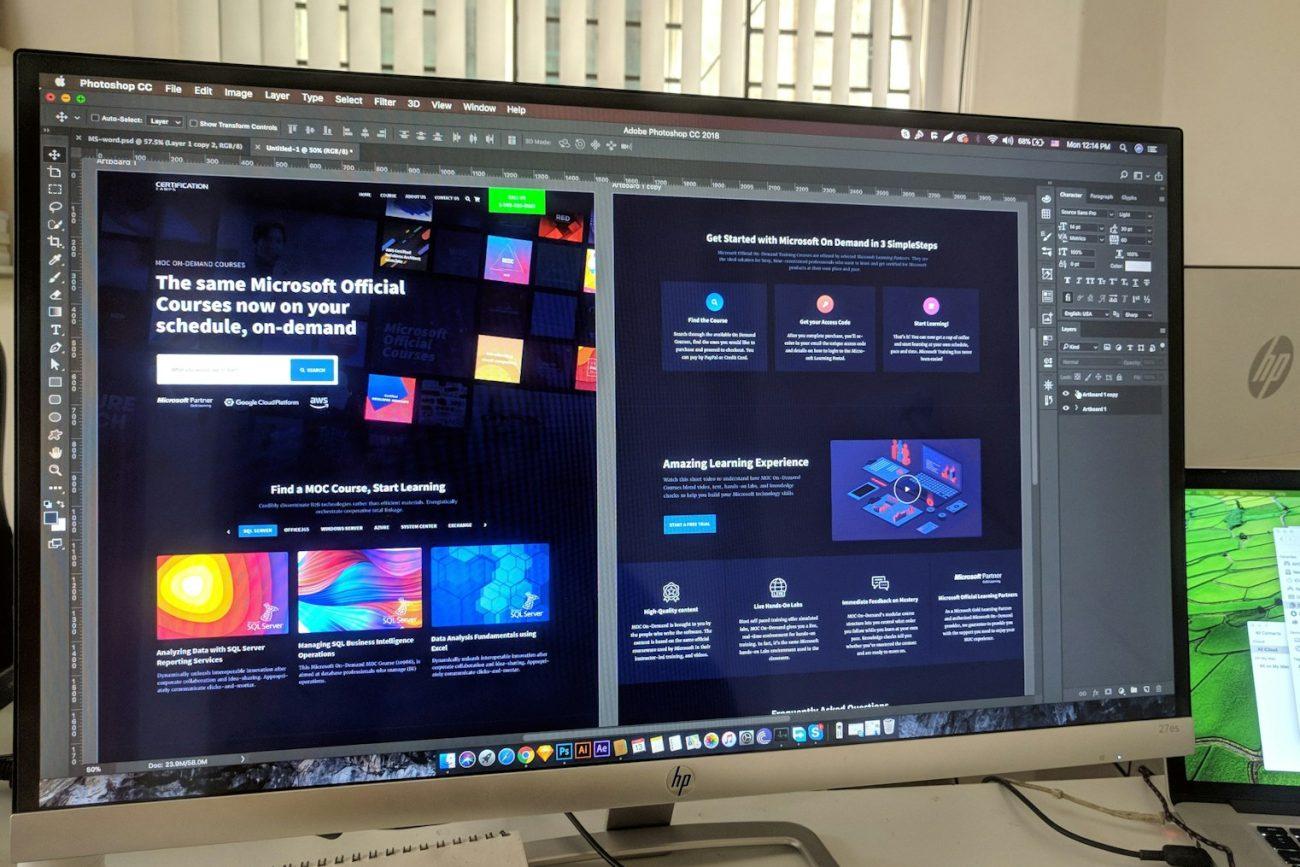Whether you’re just starting out with your online presence or looking to revamp an existing website, designing an effective website is crucial for attracting new customers and engaging with current ones. From choosing the right features and functions to determining your audience and goals, website design encompasses many important considerations. In this complete guide, we’ll cover everything you need to know to design a high-quality website that achieves your business objectives.
Understanding Website Design Basics
Let’s start with some basic terminology. Website design, also known as web design, involves creating and developing the visual elements and structure of a website. Website builders are software tools that allow you to construct websites without coding knowledge by using drag-and-drop interfaces and pre-built templates. Website development, on the other hand, involves writing code to build out features and functions programmatically. While site builders make design more accessible, it’s still helpful to understand some development fundamentals.
Determine Your Goals and Audience
Before diving into specific design elements, take time to determine your goals and audience. Why are you building this website—to make sales, build brand awareness, provide information? Knowing your objectives will help shape content and features. You’ll also want to define your target audience based on demographics like age, interests, location, and how they are likely to interact with and use your site. Getting clarity on goals and audience upfront guides critical decisions down the line.
Choose a Content Management System
The backbone of any website is the content management system (CMS) which determines how content is created, organized and displayed. Popular self-hosted options for small businesses and independent creators include WordPress, Joomla and Drupal, while site builders often have integrated CMS functionality. Choosing the right CMS comes down to factors like your technical skills and needs, site customization requirements, and compatibility with third-party plugins. Research features of top systems to pick the best CMS for your purposes.
Design for Various Device Screens
Gone are the days when web design focused solely on desktop. With over 50% of site traffic coming from mobile, your design must accommodate multiple screen formats from phones to tablets to laptops and beyond. Implementing responsive design techniques ensures your site seamlessly adapts to any viewport. Elements should dynamically resize, positions should change, and navigation should remain user-friendly across devices. Consider designing first for mobile to prioritize ease of use on smaller screens.
Choose an Intuitive Navigation System
Navigation forms the backbone of any user’s experience on a site. Make it easy for visitors to find exactly what they need through clear, well-organized navigation elements. For most sites, a horizontally-styled top bar or side bar menu works best. Limit dropdowns and include useful site pages like About, Services at the top. Text should be scannable with hierarchical importance shown through weighting, size and style. Include a visible, accessible site search and “back to top” button. Test navigation on mobile as well.
Optimize Visual Design Elements
Colors, images, fonts and spacing all contribute to the overall visual design language of your site. Choose a 2-3 color palette that is aesthetically pleasing, links to your brand, and maintains accessibility. High quality, relevant images add visual context but keep file sizes small for faster load times. Legible fonts in complementary styles create hierarchy and emphasis. Proper spacing, padding and margins ensure readability and separation of elements. Blank space is your friend – less is more.
Develop Clean, Writable Code
While site builders offer visual ease, you’ll want at least a basic understanding of HTML, CSS and JavaScript for site maintenance and optimization down the line. Clean, semantic markup provides structure and accessibility. External CSS stylesheets allow separation of concerns and browser caching. Minimal redundant or wasteful code results in faster page rendering. Commenting on intentions across the codebase leaves a roadmap for future you. Valid, standards-compliant code also helps with search engine optimization.
Perform Usability Testing
A major part of web design is testing your interface with real users to uncover issues or opportunities for improvement. Conduct usability testing both during and after the design process by observing users complete tasks on your site. Analyze where they get stuck or confused and note inefficient interactions. Validate navigation, calling out any broken or misleading elements. Improving based on user research leads to supremely intuitive, effective designs. Remote tools now enable remote testing with a broad range of demographics.
Choose Appropriate Third-Party Integrations
From payment forms to pre-chat widgets, consider third-party integrations that address functional needs and create seamless user experiences. Plugins and widgets can optimize shopping carts, payment processing, forms, analytics collection and more – just ensure each adds clear value and doesn’t negatively impact site speed or security. Vet providers carefully. Software stacks should serve the function of the sites design, not vice versa. Use integrations judiciously and avoid bloating or overwhelming your interface.
Implement Accessibility Standards
Following web accessibility design standards like WCAG ensures your site can be navigated, understood and used to the greatest extent by all people with disabilities including blindness, low vision, deafness and mobility issues. This involves carefully crafting components like forms, links, buttons, multimedia for assistive tech compatibility as well as standard compliance across colors, spacing, structure and more. Adding alt text and captions further supports all users. Accessibility should integrate into core design from the start rather than be treated as an afterthought.
Consider Ongoing Maintenance Needs
While the design process focuses on building the site, ongoing maintenance and updates are also crucial for success. Plan for page migrations, security updates, seasonality and timely content refreshes. Outline your technical support processes, striving to keep site speed, backups and downtime at a minimum. Documentation eases future site administration. Leaving room to continually optimize, iterate and enhance based on user behavior and goals futureproofs your site as needs evolve.
Launch and Continuously Optimize
With your fully functional, beautiful website designed according to best practices, you’re ready for launch. But don’t stop there. Continuously track usage metrics, monitor goal completion events, solicit user feedback and be ready to improve. Optimize based on analytics, test iterations and refine your design vision over time as you better understand your particular audience. Technology and standards shift rapidly so develop an evolution mentality. With attentive, ongoing optimization and improvement, your site will remain vibrant and compelling for years.
In summary, modern website design looks beyond surface aesthetics to encompass strategy, functionality, responsible development practices and continuous enhancement – all with the goal of serving your users effectively. Crafted according to user-centered principles and industry standards, your meticulously designed website lays the foundation for engagement, conversions and long-term business success online.



